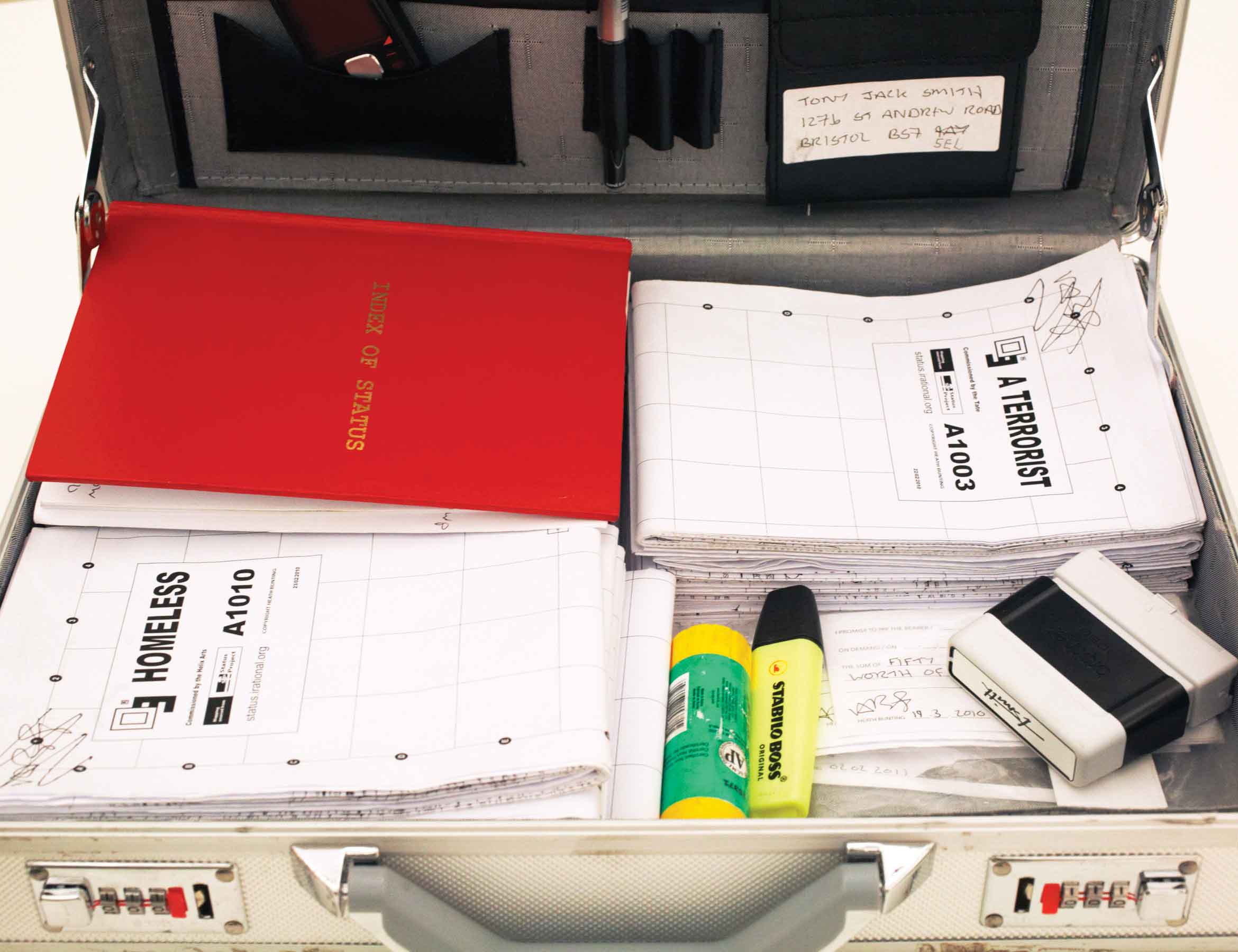« Reviews
The Art of Hacking
NIMk - Amsterdam
The Attitude of Hacking: More Than Just Cracking.
By Caridad Botella
“The Art of Hacking,” on exhibition at the Nederlands Instituut voor Mediakunst (NIMk) in Amsterdam, explores the artistic side of hacking, taken as an attitude instead of a crime. This mode of interfering with existing systems often generates negative reactions that make people think of virus-spreading, security systems-cracking evil nerds. NIMk offers a unique opportunity to understand the history of hacking and to consider different points of view with a common denominator: the use of hacking techniques by (activist) artists. In this context, hacking becomes a form of artistic intervention that can be applied to various levels of information-sharing media: from the street, to the p.c., the Internet or mass media.
“The Art of Hacking” brings together national and international artists, displaying a wide range of works that take us from individual artistic actions to mass media interventions. The exhibition opens with Useless Action #3 (2011) by Dutch artist Harmen de Hoop and cryptic installation Identity Bureau, Transferrable Synthetic British Natural Person (2011) by British artist Heat Bunting. Both are meant to engage the public in one way or another. By means of a copy machine, we are invited to duplicate his template ABOLI$H CAPITALI$M NOW! and spread it illegally in the open space. It is in our hands to take action or do nothing; the lack of activity regarding this gadget questions the art space as a place for social activism. On the other hand, Bunting is part of NIMk’s workshops and panels program in which he teaches people how to make a new identity. Besides, the show pays attention to local group initiatives such as moddr_, a Rotterdam-based media/hacker/co-working space that focuses on the artistic modification (”modding”) of existing and up-and-coming technology. Apart from making obvious how easy it is to access people’s information with the action/video BINL♥ER, this section of the show dedicates some attention to the aesthetic side of digital art.

Heath Bunting, Identity Bureau, Transferrable Synthetic British Natural Person, 2011. Courtesy SKOR. Photo: Stefanie Gratz.
Internet art also has a place within the show. German Internet artist Cornelia Sollfrank reflects upon the use of the World Wide Web as a cyber judge of quality and originality in art making. Moreover, her video Have script, will destroy: An interview with hacker Clara G. S0PHT (2009) offers a glimpse into the life of a hacker and is a testimony to the artist’s involvement in hacker conventions.
Understanding the lifestyle, group commitment and ideology of the hacker community is a key element of the exhibition. By being able to watch and listen to the members of hacker communities such as Hippies from Hell (2001-2002) in the 10-year-old documentary by Dutch filmmaker Ine Poppe, we get closer to the exhibition’s aim, as Poppe says: “Hacking does not mean to break into as many computer systems as possible; it’s an attitude that scrutinizes the influences of contemporary technology in a critical manner.”
A sense of history becomes clear: hacking is a continuation of certain practices, of an anti-system attitude that seems to have reached a climax through the practices of Julian Assange’s WikiLeaks. This can be seen in Wikirebels-The Documentary (2010), a revealing documentary into Assange’s daring project. After these two already historical documentaries, the show closes with mass media intervention artists such as excellent pranksters The Yes Men’s Dow does the right thing (2004), broadcast on the BBC World News, and artistic actionist group Übermorgen.com’s videos and installation, which explain their means of clandestine media hacking while also providing insight into the necessary tools and guidelines to achieve that goal.
In order to fully comprehend “The Art of Hacking,” it’s important to dedicate time to the documentaries but also to be a part of the workshops and panel programs that NIMk has put together. The complete program makes the hacking experience more human and accessible to all. Regardless of this detail, the Institute for Media Art of The Netherlands reflects upon a practice that, through showing its artistic side, is managing to bring forward an ideology and bury the general, negative ideas of a so-called sectarian practice. We are invited to participate and defy information systems, the same ones that are beginning to understand the dangers of user-oriented technology.
(September 9 - November 26, 2011)
Caridad Botella is a freelance art and film writer based in Amsterdam.
Filed Under: Reviews


































